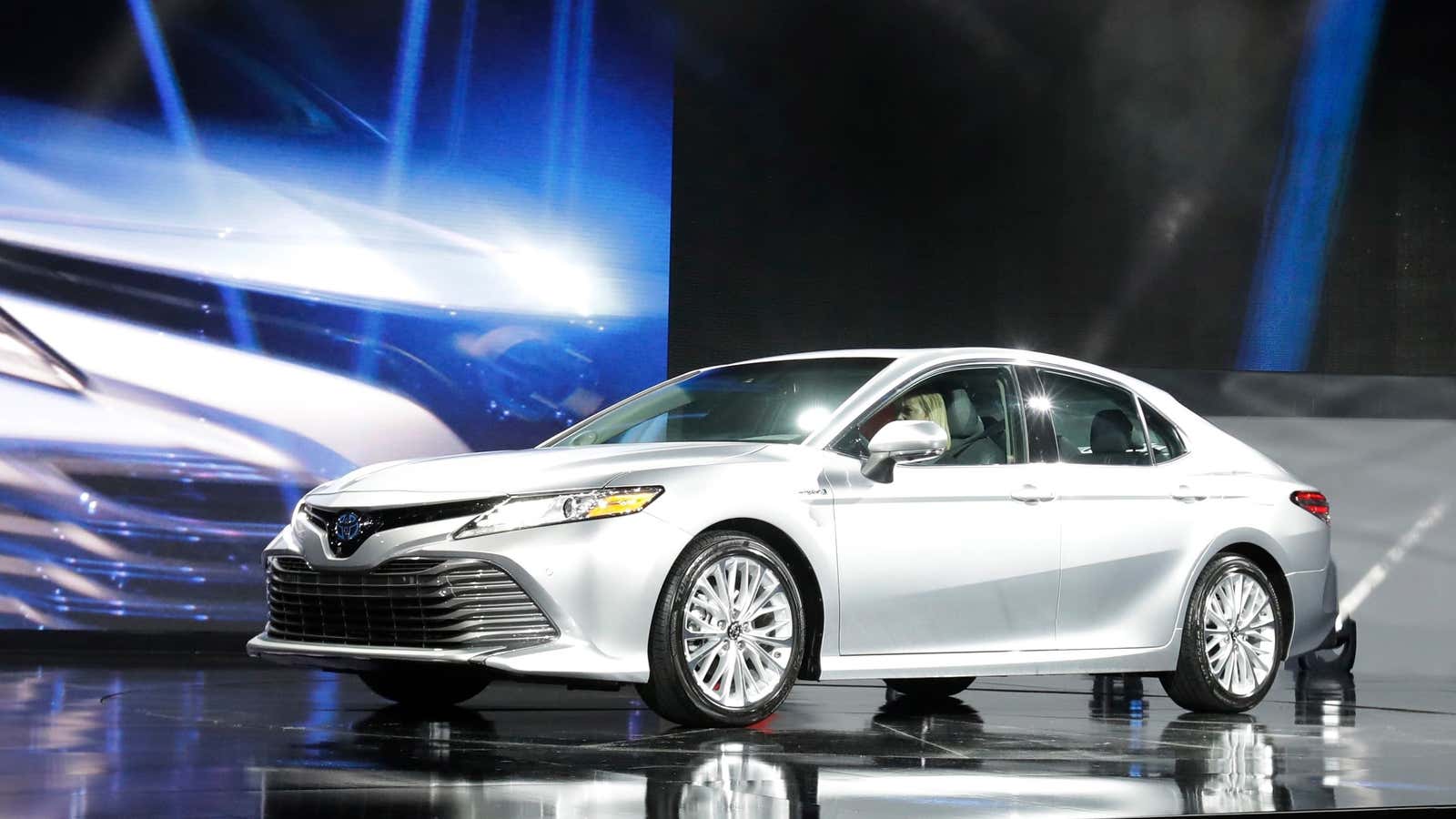Automakers are slowly nudging their cars towards becoming autonomous. Automatic lane assist and automatic braking are slowly becoming standard on new vehicles, with 92% of Toyota’s cars now shipping with the technology.
This especially holds true for the Camry, America’s best selling car (excluding pick-up trucks) for the 15 years before 2017. The new technology has its limits. Toyota, to its credit, makes many caveats clear in the Camry’s owner manual. Basically, the automatic braking will work if the pedestrian is standing still against a plain background. Otherwise, its cameras’ radar and sensors may not recognize:
- Pedestrians shorter than approximately 3.2ft. (1m) or taller than approximately 6.5ft. (2m)
- Pedestrians wearing oversized clothing (a raincoat, long skirt, etc.), making their silhouette obscure
- Pedestrians who are carrying large baggage, holding an umbrella, etc., hiding part of their body
- Pedestrians who are bending forward or squatting
- Pedestrians who are pushing a stroller, wheelchair, bicycle or other vehicle
- Groups of pedestrians which are close together
- Pedestrians who are wearing white and look extremely bright
- Pedestrians in the dark, such as at night or while in a tunnel
- Pedestrians whose clothing appears to be nearly the same color or brightness as their surroundings
- Pedestrians near walls, fences, guardrails, or large objects
- Pedestrians who are on a metal object (manhole cover, steel plate, etc.) on the road
- Pedestrians who are walking fast
- Pedestrians who are changing speed abruptly
- Pedestrians running out from behind a vehicle or a large object
- Pedestrians who are extremely close to the side of the vehicle (outside rear view mirror, etc.)
Obviously the driver is supposed to be in control of the car, but these extra autonomous features are going to slowly subsume vehicles until there’s a full autonomous mode. In AI research, these are called edge cases—rare situations that make it difficult to gather complete data needed to train algorithms.
Toyota isn’t the only automaker to offer caveats on automatic features. The manual for the Ford F-150, America’s best-selling truck, says its accuracy for automatic braking suffers in “direct or low sunlight,” as well as with “vehicles at night without tail lights, unconventional vehicle types, pedestrians with complex backgrounds, running pedestrians, partly obscured pedestrians, or pedestrians that the system cannot distinguish from a group.”
Honda makes the fewest promises of all, not promising to stop the car but simply decrease its speed in the face of an unavoidable collision.
